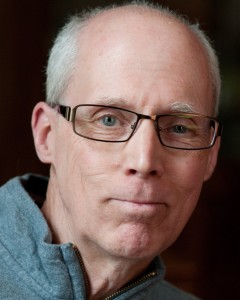“When I think back on all the c*** I learned in high school; It’s a wonder I can think at all.”
—”Kodachrome” by Paul Simon (1973)
Those lyrics (listen here ) spoke to me the moment I first heard them, 43 years ago. Not because I had a terrible high school experience, but because I could relate to having to sit through many classes taught by teachers who neither inspired nor informed.
For most people I know, that was the norm. If you had two or three teachers who truly inspired you, consider yourself pretty lucky. Most teachers are ordinary. That’s what a bell curve is all about. Most of them are not bad teachers, but they do not connect effectively with every student.

And yet—and this is the important part—we all got through high school, went to college, had productive lives. Great teachers change lives. But ordinary teachers do not doom their students to failure. In a great school, there are plenty of supports—so students “make it” anyway.
But that’s not the way it is in most of Rochester’s high-poverty schools today. Most students do not make it.
At GS4A, we are often asked how the magnet schools we propose differ from charter schools. The simple answer is that many charter school operators believe that low-performing schools are the result of poor management, bloated budgets and weak teachers whose bullying unions care more about protecting teachers than helping kids.
Charter operators typically believe that the private sector can turn around poor performing public schools using private sector management practices and (generally) non-union teachers who can be deployed more effectively.
At GS4A, we believe that public schools can work just fine—and most do. No one says the public schools in Brighton and Pittsford are no good, even though they, too, have their share of teachers who could not be called rock stars and who are represented by powerful unions.
Because current state law requires charter operators to give preference to students from the district in which they are sited, city charters schools, like RCSD schools, have large majorities of poor students.
Unlike most local charter supporters, GS4A believes that who you sit next to in school matters a lot—and the evidence supports that view. Teaching is not unimportant, but classroom demography is a much better predictor of outcomes.
Charter schools in Rochester are trying to prove that we can keep poor children in high-poverty schools and still dramatically improve the outcomes.
At GS4A, we accept that charters are part of the education landscape, and we understand why parents, frustrated with what they find in city schools, would be attracted them. In some cases, test results for charters are marginally better than those for RCSD schools, but not enough to suggest that privatizing public education is the way forward.
The magnet schools GS4A proposes are very different from the charter model. These schools would build theme-based programs (with curriculum rooted in the arts, science, foreign language, nature studies, leadership skills, or technology, for example), but they would draw students from school districts across Monroe County and cap the number of poor students (at roughly 50 percent of the student body).
If you’re like me, when you think back on all the c*** you learned in high school, you’ll remember that you made it because you were surrounded by other kids who could help you with things you didn’t understand, because your peers—even when they said they hated school—generally understood that it was important to get decent grades and graduate. The parents and teachers (including the not-so-inspirational teachers) understood that, too. And it turns out, that support can make all the difference.
We understand that some students will find a home at one Rochester’s charter schools and succeed because of it. We do not live in a black and white world, where we think we have all the answers. We support socioeconomic integration not because we don’t believe some children will succeed in high-poverty schools, but because we know that integration will improve the odds for the greater number of students.
The difference between GS4A and charter schools is the difference between anecdotal success and systemic change. Some children will thrive in charter schools. But public education can’t settle for occasional successes. In New York State, every child is guaranteed a “sound basic education” —and that requires a school system that works for all. We believe that cross-district, collaborative, socioeconomically integrated schools represent the systemic changes necessary to make that constitutional guarantee a reality.
The truth is, who you sit in class with matters. In fact, a “diverse charter school” movement is now going around the country, as awareness of the importance of socioeconomic integration spreads. At GS4A we welcome the support of charter proponents or operators who share our commitment to ending the segregation imposed by high poverty schools.
The truth is that while every school benefits from the skills of extraordinary teachers, truly effective schools work because they give students the chance to learn, if I may paraphrase the words from another popular song, “with a little help from their friends.”
